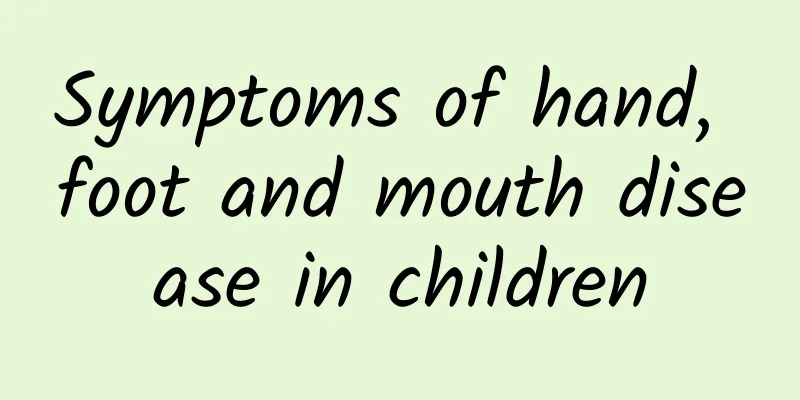What is the normal value of jaundice in infants and young children?

|
Determine the degree of jaundice. Parents can observe the degree of yellowing of the newborn's skin under natural light. If only the face is yellowed, it is mild jaundice; if the skin of the trunk is yellowed, it is moderate jaundice; if the limbs and palms and soles are also yellowed, it is severe jaundice. So what is the normal indicator of neonatal jaundice? Normal value of neonatal jaundice The normal value of jaundice in full-term babies is different from that in premature babies. Usually, the normal value of jaundice in full-term newborns is 12.9 mg/100 ml, which means that the bilirubin level in 100 ml of blood is less than 12.9 mg. The normal value of jaundice in premature babies is 15 mg/100 ml of blood, which means that the bilirubin level in 100 ml of blood is less than 15 mg. When the baby's jaundice value exceeds 12.9mg/dl or the neonatal jaundice index rises too fast (rising by more than 5mh/dl per day), or the jaundice lasts longer than the 14 days for full-term infants and the 4 weeks for premature infants, or the jaundice disappears and reappears, it means that the neonatal jaundice is unhealthy and may be suffering from pathological jaundice. Neonatal jaundice index standard Experts believe that jaundice is generally divided into physiological jaundice and pathological jaundice. As long as it exceeds the scope of physiological jaundice, it is called pathological jaundice. 1. Physiological jaundice Usually, the skin of a newborn baby is a little yellow, which can be seen with the naked eye 2 days after birth. The yellowing reaches its peak at 3-5 days and will mostly disappear at 7-10 days. At this time, the jaundice index (serum bilirubin value) is generally within the normal range of no more than 15 mg/dL. 2. Pathological jaundice There are many causes of pathological jaundice. The criteria for full-term and premature babies are different. If the mother finds the following conditions, she should send the baby to the hospital for observation: (1) When jaundice is detected in a newborn within 24 hours of birth, it is called “early jaundice”. (2) The jaundice index rises too high all of a sudden, increasing by more than 5 mg/dL a day. This is a common symptom of hemolytic jaundice (the blood types of the mother and baby are incompatible). (3) The jaundice index is too high, reaching 15 mg/dL. (4) It lasts too long. Physiological jaundice generally lasts for 7-10 days. If it lasts for more than 2 weeks, you should pay attention. If parents want to know the jaundice of newborn babies at any time, they can use a jaundice meter to measure the jaundice value of newborn babies without blood sampling. Just press the probe lightly on the baby's forehead and the bilirubin concentration in the baby's skin tissue can be directly measured instantly. |
<<: How to boost milk production after three days of breastfeeding due to jaundice
>>: How to bask in the sun when your baby has jaundice
Recommend
How to distinguish between pneumonia and cold in children? Seven tips for parents to prevent pneumonia in children
According to the source of infection, pediatric p...
Can patent ductus arteriosus be cured?
Can patent ductus arteriosus be cured? As modern ...
What medicines can cure pneumonia in children?
Pediatric pneumonia is a common clinical disease ...
What medicine should children take for respiratory tract infection and cough
Children with respiratory tract infection and cou...
How to treat repeated fever in children with pneumonia
Repeated fevers due to pneumonia in children requ...
What medicine is good for neonatal jaundice
Neonatal jaundice is mostly a physiological probl...
How to prevent polio symptoms in infants
Once a child shows symptoms of paralysis, it will...
What to do if an 8-year-old child has severe ADHD
If an 8-year-old child has severe ADHD, parents c...
What are the methods to deal with baby indigestion? Is massage good for baby indigestion?
Indigestion is mainly manifested as upper abdomin...
What should I do if my baby coughs badly while sleeping at night? ...
The baby is just born and the immune system in th...
Symptoms of vulvar dystrophy
Vulvar dystrophy generally presents clinically as...
What should I do if I have eczema in my child? What are the causes of eczema in my child?
If the child's eczema is more serious, you ca...
What is better for babies with indigestion? If your baby has indigestion, you can try these 4 porridges
Generally speaking, the gastrointestinal function...
Can adults have hand, foot and mouth disease? What are the symptoms?
Adults can indeed get hand, foot and mouth diseas...
How to treat mycoplasma cough in children
Mycoplasma cough in children can generally be tre...









